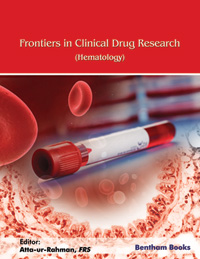Abstract
Iron overload is a major complication among thalassemia patients. In these
patients, ineffective erythropoiesis decreases hepcidin production resulting in iron
dysregulation, which leads to a number of serious complications. Damage to organs
susceptible to iron overload could be prevented by effective iron chelation. Despite the
efficacy of iron chelators, limitations to their use are that they are only used after the
patients have suffered from iron overload, and they have also been associated with a
number of side effects. New therapeutic strategies for the treatment of thalassemia have
focused on addressing the pathophysiology of the disease. Drugs currently being
developed to improve ineffective erythropoiesis are aimed at increasing hemoglobin
levels and subsequently decreasing iron absorption. The new therapeutic drugs in this
class include pegylated erythropoietin, JAK 2 inhibitors, and TGF-β activin receptor
traps (sotatercept and luspatercept). Luspatercept is currently recognized as the most
promising drug in this class and has completed phase III of trials. With the aim of
improving iron dysregulation, these new therapeutic strategies focus on preventing the
absorption of iron in the gastrointestinal tract. These therapies involve hepcidin
agonists and specific derivatives, such as LJPC-401 and Rusfertide (formerly PTG-
300), certain ferroportin inhibitors, such as Vamifeport (formerly VIT-2763) and
transmembrane protease serine 6 (TMPRSS6) antisense oligonucleotides. Although the
therapeutic potential of these new treatments in thalassemia patients is promising,
ongoing clinical trials are needed. Importantly, these new treatment strategies may
provide a new, more effective paradigm of treatment in thalassemia patients.
Keywords: Activin receptor, Antisense oligonucleotides, Ferritin, Ferroportin, Ferroportin inhibitor, Hepcidin, Hepcidin agonist, Ineffective erythropoiesis, Iron overload, Iron chelator, JAK-2 inhibitor, Luspatercept, Pegylated erythropoietin, Rusfertide, Sotatercept, Thalassemia, Thalassemia complication, TMPRSS6, TGF-β, Vamifeport.






















